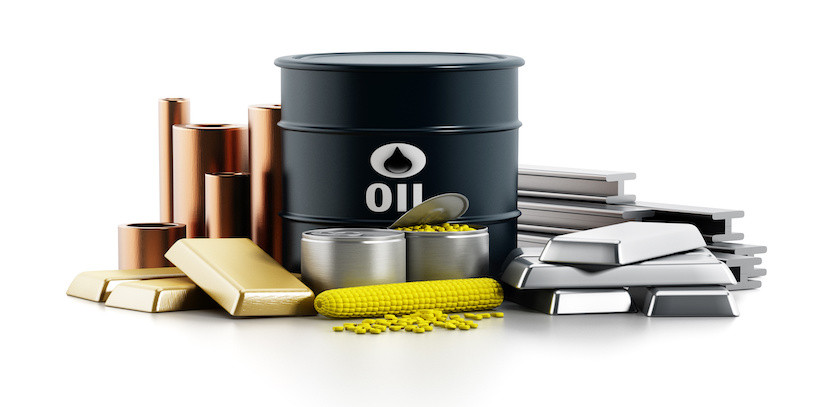An Overview of Commodities
Commodities, the unprocessed raw materials, are at the core of every product around us - from energy to consumer goods. Metals, for instance, fall under the commodity umbrella with varying dynamics. Renowned metal commodities like gold, often used as a financial hedge against market downturns, are traded globally. Similarly, silver, besides being a collector's item and jewelry component, has broad industrial applications that influence its demand. Copper and steel, chiefly intended for industrial use, also see their demand fluctuate with overall economic activity. Read more about Gold and Silver Investment.
In addition to metals, sugar, a perishable and hence classified as a 'soft commodity', also exhibits varied forms. The most commonly traded forms of sugar are Sugar No. 11 (raw product benchmark), Sugar No. 16 (designed for U.S. consumption), and White Sugar (more refined variant used in a range of other products).
Although numerous commodities like metals and sugar are traded worldwide, trading volumes can differ greatly, with seasonal trends also playing a role. For instance, the trading volume of copper commodity contracts typically surpasses that of an agricultural commodity like soybean oil. While less commonly traded commodities may demand a deeper understanding of market dynamics and pricing pressures, the acquisition of this specialized knowledge can significantly benefit investors and traders aiming to profit from global trade.
Understanding Commodities Investing
Investing in commodities is a strategy that involves increasing exposure to commodities as an asset class. This can be achieved directly through the purchase of physical assets like gold bullion, or indirectly through financial derivatives, commodity tracking funds, or shares in commodity-related companies.
Investors are drawn to commodities for several reasons. These include the prospect of high returns, the protection against inflation, and the portfolio diversification that commodities can provide due to their low correlation with other financial markets.
Popular Commodities for Investment
Among the most widely traded commodities are precious metals (gold, silver, platinum), oil, natural gas, gasoline, corn, wheat, soybeans, cattle, hogs, sugar, and lumber. Notably, the majority of futures trading is now dominated by futures on financial assets like equity index, interest rates, and currencies rather than raw commodities.
Adding commodities to an investment portfolio provides diversification and can act as a hedge against price exposure further up the value chain in certain industries. This includes energy products like oil, gas, and coal; agricultural products like corn, soy, canola, pork, and beef; and metals like gold, silver, copper, and platinum. These commodities have well-defined market dynamics and simple financial instruments to facilitate trading.

Approaches to Commodities Investing
Commodity investors have several options to gain exposure to this market.
Physical Ownership: This approach typically applies to precious metals like gold and silver. Investors buy these metals in the form of bullion, which are valued closest to the melt price (the market price if the metal is melted down). However, this method involves dealing with storage, insurance, and liquidity issues.
Futures Contracts: These contracts allow investors to speculate on the future price of a commodity. It involves an agreement to buy or sell a specific amount of a commodity at a predetermined price and date in the future.
Individual Securities: Investors can gain exposure to commodities by investing in individual stocks of companies that are involved in the production or processing of commodities.
Mutual Funds, Exchange-Traded Funds (ETFs) and Exchange-Traded Notes (ETNs): These financial instruments can provide exposure to commodities. Some funds are specific to individual commodities, pooling investor funds to invest in a specific commodity sector.
Alternative Investments: Commodities, similar to real estate, are considered an alternative investment category. These could be derivatives such as structured products, which are designed to replicate the returns of a commodity index. They can also be commodity-focused hedge funds, which aim to generate high returns by utilizing complex strategies and financial instruments.
Risks and Rewards of Commodities Investing
Like any investment, commodities have their own unique risks and rewards. On the reward side, commodities can offer substantial potential for profit. As the global economy expands, the demand for commodities tends to increase, which can drive up prices. This is especially true for non-renewable resources like oil and minerals, where supply is limited. Moreover, commodities often serve as a hedge against inflation, maintaining their value even when the purchasing power of money declines.
On the risk side, the price of commodities can be highly volatile. They are influenced by a variety of factors, such as geopolitical events, natural disasters, and changes in economic policy. Additionally, commodities don't generate cash flows like stocks and bonds, making them harder to value.
Moreover, commodity markets can be less transparent than other financial markets. The price of a commodity may be influenced by large traders, and it can be difficult for individual investors to access reliable information.
The Role of Commodities in a Portfolio
When thoughtfully integrated into a portfolio, commodities can serve as an effective diversification tool. They often perform well during periods when traditional asset classes like stocks and bonds are underperforming. This is due to the fact that commodity prices are driven by different factors than those influencing the stock and bond markets.
Investors who allocate a portion of their portfolio to commodities can potentially reduce their overall risk and enhance their returns. But it's important to remember that investing in commodities isn't for everyone. It requires a deep understanding of the markets, a high risk tolerance, and a long-term investment horizon.
Commodities Investing Strategies
Investors can approach commodities investing in various ways depending on their risk appetite, investment objectives, and expertise in the commodities market.
1. Buy-and-Hold Strategy: Some investors adopt a buy-and-hold strategy, especially with commodities that have a tendency to appreciate over the long term due to supply and demand dynamics. This strategy is relatively passive and requires less time monitoring the markets.
2. Trend Following: This strategy involves entering the market when a commodity's price starts trending in a particular direction and exiting when the trend begins to reverse. Trend following can be profitable during periods of significant price movement but requires constant monitoring of the markets.
3. Range Trading: Some commodities trade within a specific range due to established supply and demand balances. Investors can profit by buying at the low end of the range and selling at the high end. However, predicting these ranges can be difficult and the strategy can be risky if the price breaks out of the established range.
4. Spread Trading: Spread trading involves taking a long position in one futures contract while simultaneously taking a short position in another. This strategy aims to profit from the price difference between the two contracts. It's generally less risky than outright futures trading, but it requires a deep understanding of the commodities market.
Instruments for Commodities Investing
Investors have several options when it comes to instruments for commodities investing:
1. Futures Contracts: Commodities futures are the most direct way to invest in commodities. These contracts allow investors to buy or sell a commodity at a future date at a predetermined price. However, futures trading is complex and risky, requiring significant expertise.
2. Commodity ETFs and ETCs: Commodity Exchange Traded Funds (ETFs) and Exchange Traded Commodities (ETCs) allow investors to gain exposure to commodities without having to trade futures. These instruments are traded like stocks and can provide exposure to a single commodity or a basket of commodities.
3. Stocks: Investing in companies that produce commodities can be another way to gain exposure to the commodities market. This can be less risky than direct commodities investing, but the performance of these stocks can be influenced by factors other than commodity prices, such as the company's management and overall stock market trends.
4. Mutual Funds and Index Funds: These funds provide exposure to a diversified portfolio of commodities or commodity-producing companies. They are managed by professionals and offer an easy way to invest in the commodities market.
In conclusion, investing in commodities can be a valuable component of a diversified investment portfolio. But like all forms of investing, it's important to understand the inherent risks and rewards and to align your commodities investing strategy with your overall financial goals and risk tolerance.
In conclusion, commodities offer a vast range of investment opportunities, but they also come with their unique risks. Whether an investor should include commodities in their portfolio depends largely on their individual financial goals, risk tolerance, and investment horizon. With careful research, strategic planning, and a clear understanding of the market dynamics, investing in commodities can potentially yield significant returns.





